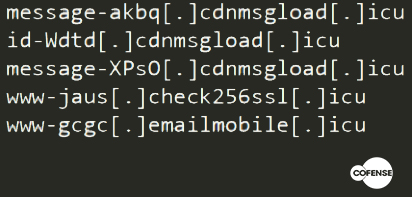
Estimated reading time: 6 minutes
Una logic bomb, chiamata anche slug code, è un pezzo di codice inserito in un’applicazione, virus o malware che implementa una funzione dannosa dopo un certo limite di tempo o in condizioni specifiche.
Queste “bombe” sono spesso usate tramite virus, worm e Trojan per gestire al meglio il tempo a disposizione e fare il massimo danno prima di essere notati. Eseguono azioni come corrompere o alterare i dati, riformattare un disco rigido e cancellare file importanti.
In questo articolo voglio spiegare cosa sia un bomba logica e offrire qualche suggerimento per prevenirne i danni.

Cos’è un logic bomb virus?
Una bomba logica è spesso inserita in un virus o comunque in un file eseguibile. È composta da un codice malevolo che innesca un attacco quando vengono soddisfatte condizioni specifiche. Le condizioni possono essere positive (qualcosa che accade) oppure negative (qualcosa che non accade). Nel primo caso un esempio è quello dell’apertura di un programma, invece, un esempio di condizione negativa è un utente che non compie il login.
Le bombe logiche sono spesso installate da qualcuno con un accesso di alto livello, come un amministratore di sistema. Tale persona può causare il caos impostando questi codici su più sistemi e programmandoli per “esplodere” simultaneamente quando si verifica un certo evento. Per esempio, potrebbero azionarsi quando un certo dipendente viene rimosso dal database degli stipendiati, cioè quando viene licenziato.
Con il termine slag code ci si riferisce al codice manipolato che rende dannoso un programma altrimenti sicuro. Le versioni a tempo di bomba logica sono quelle più diffuse e utilizzano come condizione positiva il trascorrere di un certo lasso di tempo.
Qualunque sia il nome usato, il metodo di attacco è sempre chiaramente lo stesso: il codice rimane dormiente nel software infetto fino a quando non viene innescato. Gli attacchi comuni coinvolgono la corruzione dei dati, la cancellazione dei file e la cancellazione dei dischi rigidi.
Come funziona
Il modo in cui una logic bomb funziona dipende da chi l’ha ideata. Ogni bomba logica è unica, ed è per questo che sono difficili da tracciare. Di solito sono personalizzate per essere il meno rilevabili possibile. Spesso sono travestite per sembrare un tipico virus informatico o inserite in altri tipi di malware come i worm. Worm e virus sono diversi, ma le bombe logiche non si preoccupano della distinzione: possono causare danni attraverso entrambi.
Una bomba logica è effettivamente un malware? Poiché fanno parte di altri programmi, no, ma di solito hanno un intento maligno. Ecco perché gli slag code sono così difficili da rilevare. Inoltre, essendo “solo” codice, potenzialmente inseribile ovunque, mitigare il rischio è più complicato.
La cosa migliore da fare, come utente finale che potrebbe essere coinvolto in un attacco con una logic bomb, è quello di tenere gli occhi aperti e chiedere agli esperti IT della tua azienda di fare i controlli necessari in caso di dubbio. Il rischio è quello di far scattare la bomba involontariamente cercando di trovarla.
Esempi di attacchi
Le bombe logiche possono cambiare in modo impercettibile un frammento di codice in modo che appaia tecnicamente normale ad un sistema automatico di ricerca delle minacce, mentre sembrerebbe molto sospetto per un occhio umano. Nel 2016, un programmatore freelance ha volontariamente causato un malfunzionamento ricorrente dei fogli di calcolo in una filiale della società Siemens. La filiale lo ha continuato ad assumere per risolvere il problema che lui stesso aveva causato (Fonte). In questo caso, i dipendenti non sospettavano nulla fino a quando una fortunata coincidenza ha costretto il codice maligno a uscire allo scoperto.
Anche le aziende possono usare bombe logiche per violare i propri clienti. Nel 2005, Sony fu coinvolta in uno scandalo per aver rilasciato dei CD che scatenavano una bomba logica quando venivano inseriti in un computer. Lo slag code contenuti nei CD installava un rootkit che bloccava la capacità del PC di copiare i CD. (Fonte)
Un altro caso di alto profilo si è verificato nei primi anni 2000, quando un dipendente di UBS Global, arrabbiato per una disputa salariale, ha piazzato una bomba logica a tempo che ha causato più di tre milioni di dollari di danni. Un segno evidente che uno snippet di codice molto piccolo può causare una grande quantità di danni. (Fonte)
Nel 2013, un attacco con una bomba a tempo in Corea del Sud ha cancellato i dischi rigidi di diverse banche e società di trasmissione. Il gruppo responsabile dell’attacco ha messo la bomba a tempo all’interno di un malware che ha finito per infettare oltre 32.000 sistemi. Le bombe sono esplose tutte insieme, causando il caos in tutto il paese. (Fonte)

Da dove vengono e come prevenire le logic bomb
Come abbiamo visto anche negli esempi, le bombe logiche sono tipicamente distribuite all’interno di una rete chiusa, come quella di un’azienda o di una filiale. Una delle probabili fonti è un dipendente scontento con accessi di amministratore, quindi un attento monitoraggio delle attività in uscita del personale dovrebbe rivelare qualsiasi attività sospetta. Ma non è tutto, le bombe logiche possono anche essere piazzate in allegati di email e download di file sospetti, quindi gli utenti dovrebbero essere vigili quando scelgono i file da scaricare.
Come abbiamo visto quando abbiamo parlato di phishing e di ingegneria sociale, la parte più hackerabile di un sistema, sono spesso gli user. Per questo una campagna preventiva è sempre un’ottima scelta. Prendersi cura del personale significa anche proporre dei training specifici tramite servizi di phishing etico.
Oltre alla prevenzione, è bene limitare i privilegi amministrativi a un gruppo selezionato di dipendenti in modo che sia meno probabile che qualcuno possa causare gravi danni alla rete con una bomba logica. Questo metodo preventivo, inoltre, riduce il numero dei sospetti in caso di attacco, rendendo l’appartenenza a quello specifico gruppo di dipendenti di per sé un deterrente contro gli attacchi interni.
La soluzione proposta da SOD
Dove la prevenzione fallisce e vincono invece gli hacker, è il campo ideale per implementare sistemi avanzati di monitoring e analisi.
SOD offre, per esempio, un sistema SIEM nella soluzione SOC as a Service. Tramite il SIEM vengono costantemente raccolte informazioni su quello che succede nella rete. Queste informazioni vengono poi arricchite con metadati contestuali per uniformarle e gestirle al meglio. Già questo è in grado di far scattare allarmi se alcuni eventi sospetti si verificassero. Ma se questo non bastasse, il SOC dispone anche di uno strumento di “User and Entity Behavior Analysis” (UEBA) che analizza il comportamento degli utenti e grazie all’interazione di una IA riesce a individuare comportamenti sospetti.
Se vuoi saperne di più riguardo al servizio SOC offerto, o se hai delle domande su come SOD può aiutarti a mantenere la tua azienda al sicuro, non esitare a contattarci. Saremo lieti di rispondere a ogni dubbio.
Useful links:
Mobile App Penetration Test & Code Review
Cos’è la Cyber Security? Definizione e proposte

Estimated reading time: 6 minutes
Out of nowhere, someone replies to an email conversation dated months ago. This is a real conversation that actually happened. Maybe it’s about a meeting, a job opportunity. This email seems very relevant, but beware, it could be zombie phishing .
Indeed, something is wrong, the topic discussed has been over for months and now there is a strange error message in the body of the email. This is a sneaky tactic: revive a long dead email conversation.

Not the usual phishing
The Cofense ™ Phishing Defense Center ™ (PDC) spotted a large Zombie Phishing campaign in 2018. The scam , like almost any phishing attack, is carried out through compromised email accounts.
Scammers take over an email account and respond to long-closed conversations with a phishing link or malicious attachment (e.g. malware or a keylogger ) . Since the email subject is usually relevant to the victim, a curiosity-driven click is very likely to occur . In fact, let’s not forget that the original conversation was already present in the messages received, it is easy to think that it is a follow up or similar.
These Zombie Phishing attacks appear to use automatically generated infection URLs to evade detection. No two links are alike, and they are hidden behind “error” messages without too many frills in the body of the message. This scenario provides a pattern of apparent legitimacy for the users who are victims.
The zombies in computer science
In the computer industry, a zombie is a compromised computer connected to the network. The compromised state could be due to a hacker, virus, malware, or trojan horse .
The infected machine performs malicious tasks under a remote direction. Zombie computer botnets are often used to spread email spam and launch denial-of-service (DoS) attacks.
Types of attack
Here are some observed patterns of Zombie Phishing carrying malicious links . A distinguishing factor was the use of two distinct graphic templates containing button or link error messages.
The message reads something like “Incomplete message” or “Inability to show the whole message”. The link or button invites you to click to see the original message. Obviously the click only involves the installation of a malware or other similar events . Note that no two identical links have been identified, a sign that probably a bot was generating the addresses.
Another common factor is the use of domains with the .icu TLD. This is probably a factor that varies considerably over time. Here are some of the domains found in the first analysis of 2018:
These zombie phish attacks have been observed to use official organizational logos to add legitimacy to the fake login pages. A common practice in phishing techniques that we have already seen in other articles.
Landing pages are designed to look like a legitimate online portal, including a company logo and even a favicon. In these cases the ultimate goal is the theft of the victim’s credentials .
Furthermore, any victim who visits the malicious website is “tagged” using the host’s IP address as an identifier and, after entering the credentials, is directed to the same spam website seen by other victims. This is often done via obfuscated links using URL shorteners (such as hxxps://href[.]Li/).
If the same host tries to visit the phishing link again, the fake login page is skipped and you are forwarded directly to the spam page. This markup and URL shortener obfuscation helps attackers keep a low profile and continue their campaign unabated.
Conversation Hijacking

The conversation hijacking tactic is by no means new and is now living a new life with zombie phishing . Scammers have hijacked compromised email accounts to distribute malware and phishing emails as replies to conversations that have been concluded for years now.
This technique is still popular because it makes victims much more likely to click on links and download or open files. The threshold of attention against classic phishing attacks is lowered when messages are brought into conversations already in their inbox .
A couple of years old example of this was the botnet Geodo . Basically it is insertion into existing email threads ( conversation hijacking ) to deliver malicious documents. These, in turn, download a sample of Geodo or other malware such as Ursnif , which according to Key4Biz was the most widespread in Italy in June 2020.
However, the effectiveness of this tactic can greatly depend on the content of the conversations . A reply to an automated advertising email is less likely to cause an infection than a reply to a help-desk support thread.
There have been several Geodo zombie phishing campaigns consisting of replies to automated advertising emails. This is an indication that, in some cases, campaigns consist of indiscriminate replies to all emails in a mailbox. Since the volume of these conversation hijacking is still relatively low, the small reach of these emails is probably limited by the number of ongoing conversations .
Certain account types are therefore more likely to attract the direct attention of threat actors and induce them to invest additional effort and time in developing unique phishing campaigns for those accounts.
Defense from zombie-phishing
Here are some quick tips to avoid losing your credentials in a Zombie Phishing attack:
- Beware of email subjects that may seem relevant but come from old conversations
- Beware of any error message in the body of the message
- Don’t trust attached documents just because they’re replying to a conversation
- Hover your mouse over buttons or links in suspicious messages to check for suspicious domains
It has been observed that these campaigns have gotten smarter . To combat this and other forms of phishing, employee training is key.
A properly trained workforce is what it takes to defend your organization against Zombie Phishing attacks.
SOD offers a full service in this regard . We begin by attacking the company in a controlled manner, testing any weaknesses in employee safety or behavior. Subsequently, specific training is designed to remedy the gaps and fully train the staff.
To keep defenses high, our SOCaaS includes the analysis of user behavior, logs of connected machines and the network in a to immediately identify phishing attempts.
Useful links:
Customers
Twitter FEED
Recent activity
-
SecureOnlineDesktop
Estimated reading time: 6 minutes L'impatto crescente delle minacce informatiche, su sistemi operativi privati op… https://t.co/FimxTS4o9G
-
SecureOnlineDesktop
Estimated reading time: 6 minutes The growing impact of cyber threats, on private or corporate operating systems… https://t.co/y6G6RYA9n1
-
SecureOnlineDesktop
Tempo di lettura stimato: 6 minuti Today we are talking about the CTI update of our services. Data security is… https://t.co/YAZkn7iFqa
-
SecureOnlineDesktop
Estimated reading time: 6 minutes Il tema della sicurezza delle informazioni è di grande attualità in questo peri… https://t.co/tfve5Kzr09
-
SecureOnlineDesktop
Estimated reading time: 6 minutes The issue of information security is very topical in this historical period ch… https://t.co/TP8gvdRcrF
Newsletter
{subscription_form_1}© 2023 Secure Online Desktop s.r.l. All Rights Reserved. Registered Office: via dell'Annunciata 27 – 20121 Milan (MI), Operational Office: via statuto 3 - 42121 Reggio Emilia (RE) – PEC [email protected] Tax code and VAT number 07485920966 – R.E.A. MI-1962358 Privacy Policy - ISO Certifications















